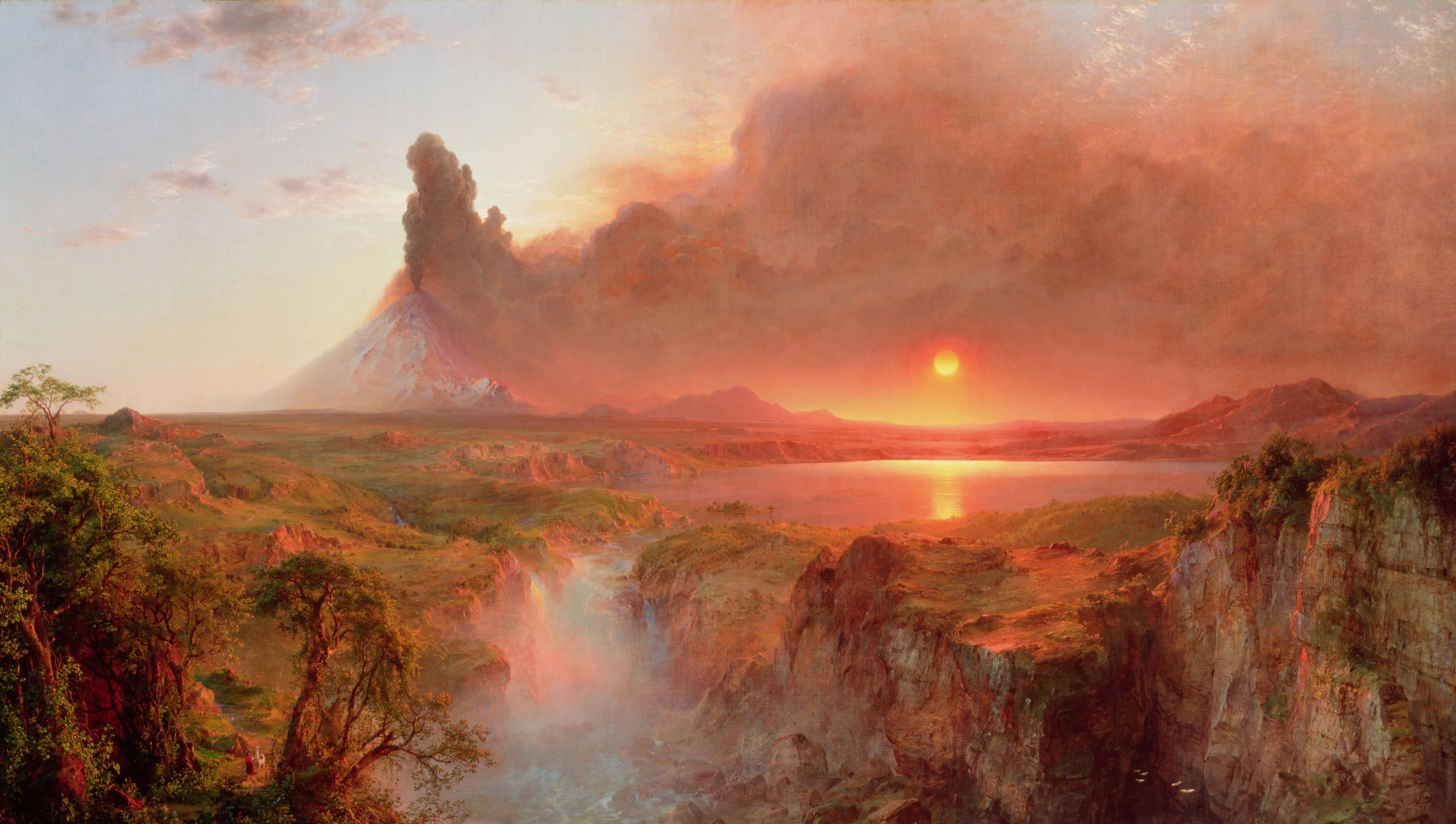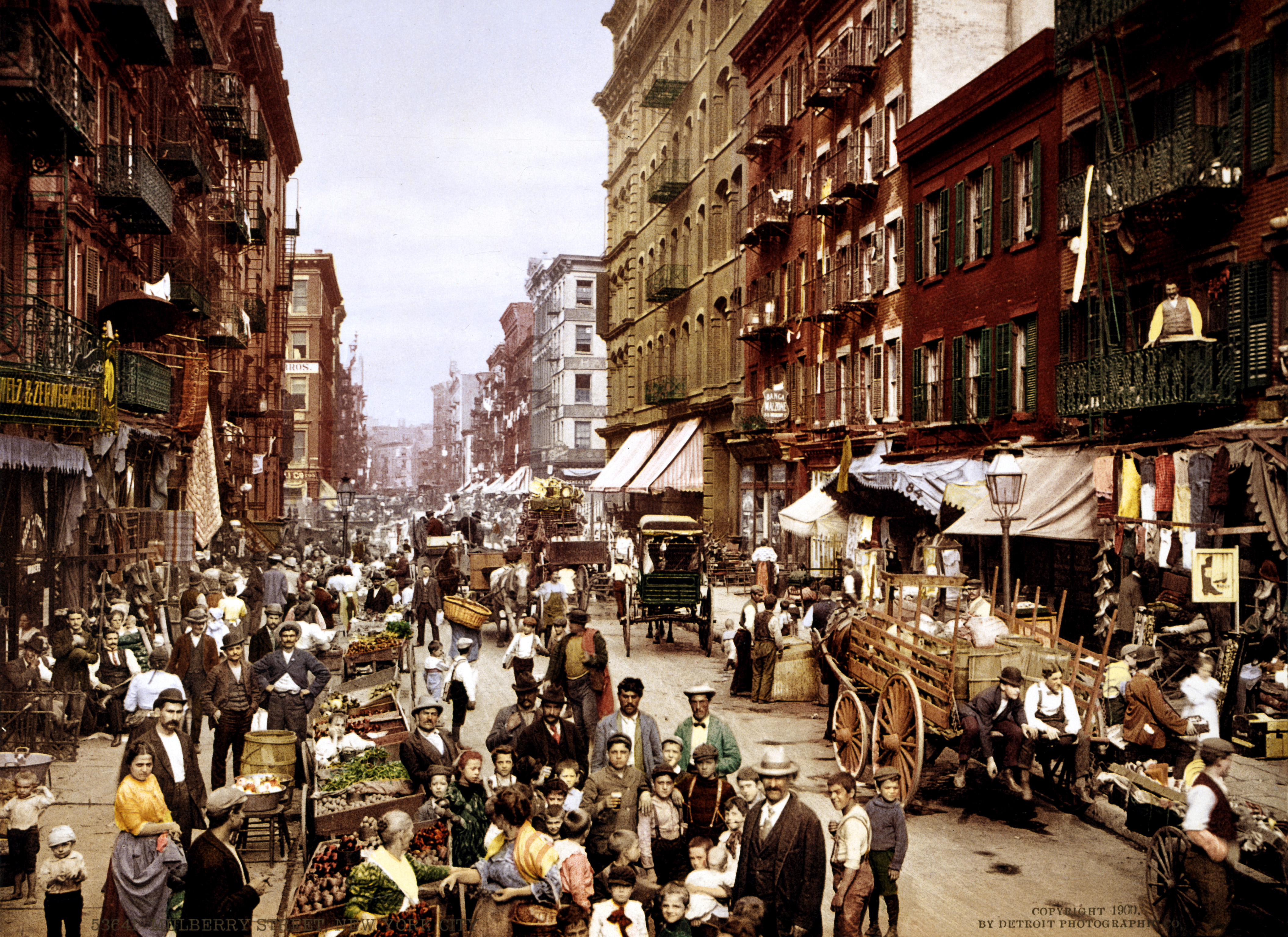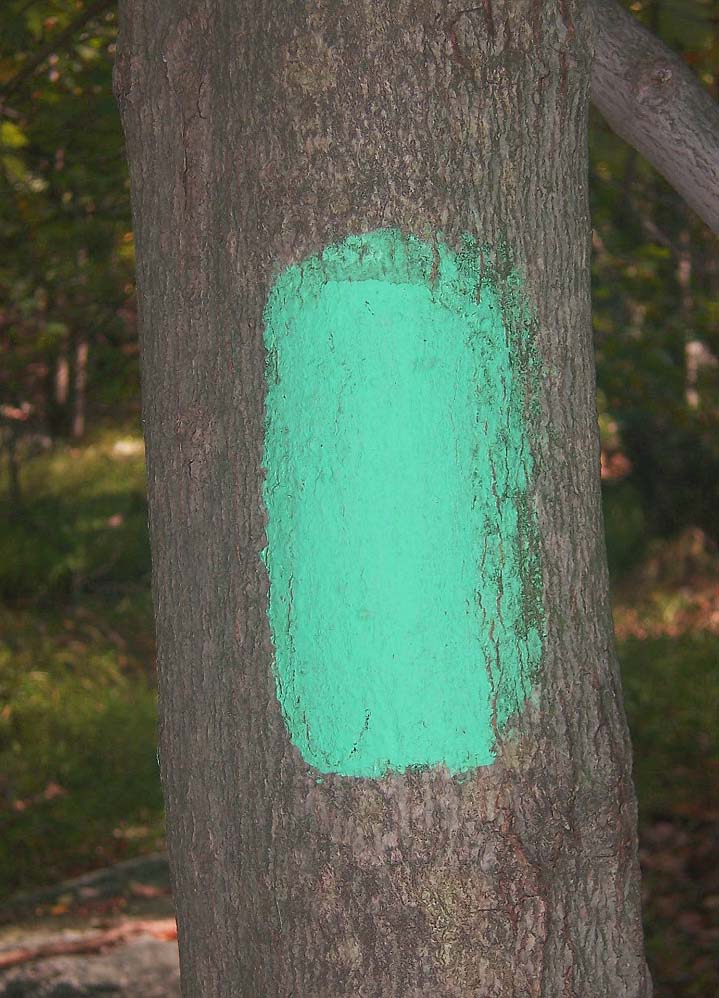|
Palenville, New York
Palenville is a hamlet and census-designated place (CDP) in Greene County, New York, United States. The population was 1,037 at the 2010 census. Palenville is in the southwestern part of the town of Catskill, located at the junction of Routes 23A and 32A. It lies at the foot of Kaaterskill Clove, at the base of the Catskill Mountains. Kaaterskill Creek, exiting the Clove, runs through the town, and was spanned by a swinging footbridge, destroyed during Tropical Storm Irene. The creek provides a number of swimming holes in the summer months, and the Long Path runs through the town. History Palenville takes its name from the Palen family, who built and operated tanneries throughout the Catskills starting the 1820s. The tannery era was short. When the local supply of hemlock bark was exhausted, the tannery closed, leaving Palenville to reinvent itself. With many waterfalls and natural vistas nearby, Palenville was an important center of the Hudson River School of painting duri ... [...More Info...] [...Related Items...] OR: [Wikipedia] [Google] [Baidu] |
Census-designated Place
A census-designated place (CDP) is a concentration of population defined by the United States Census Bureau for statistical purposes only. CDPs have been used in each decennial census since 1980 as the counterparts of incorporated places, such as self-governing cities, towns, and villages, for the purposes of gathering and correlating statistical data. CDPs are populated areas that generally include one officially designated but currently unincorporated community, for which the CDP is named, plus surrounding inhabited countryside of varying dimensions and, occasionally, other, smaller unincorporated communities as well. CDPs include small rural communities, edge cities, colonias located along the Mexico–United States border, and unincorporated resort and retirement communities and their environs. The boundaries of any CDP may change from decade to decade, and the Census Bureau may de-establish a CDP after a period of study, then re-establish it some decades later. Most unin ... [...More Info...] [...Related Items...] OR: [Wikipedia] [Google] [Baidu] |
Catskill Mountains
The Catskill Mountains, also known as the Catskills, are a physiographic province of the larger Appalachian Mountains, located in southeastern New York. As a cultural and geographic region, the Catskills are generally defined as those areas close to or within the borders of the Catskill Park, a forest preserve protected from many forms of development under New York state law. Geologically, the Catskills are a mature dissected plateau, a flat region subsequently uplifted and eroded into sharp relief by watercourses. The Catskills form the northeastern end of the Allegheny Plateau (also known as the Appalachian Plateau). The Catskills were named by early Dutch settlers. They are well known in American society as the setting for films and works of art, including many 19th-century Hudson River School paintings, as well as for being a favored destination for vacationers from New York City in the mid-20th century. The region's many large resorts gave many young stand-up comedian ... [...More Info...] [...Related Items...] OR: [Wikipedia] [Google] [Baidu] |
Kaaterskill Falls
Kaaterskill Falls is a two-stage waterfall on Spruce Creek in the eastern Catskill Mountains of New York, between the hamlets of Haines Falls and Palenville in Greene County. The two cascades total 260 feet (79 m) in height, making Kaaterskill Falls one of the highest waterfalls in New York, and one of the Eastern United States' tallest waterfalls. The waterfalls are one of America's oldest tourist attractions, being depicted or described by many books, essays, poems and paintings of the early 19th century. Beginning with Thomas Cole's first visit during 1825, they became a subject for painters of the Hudson River School, setting the wilderness ideal for American landscape painting. The Falls also inspired "Catterskill Falls", a poem by William Cullen Bryant. History Geological formation The falls, like the clove and creek with which they share a name, are a relatively recent addition to the Catskills in terms of geologic time. They evolved through stream capture at the end ... [...More Info...] [...Related Items...] OR: [Wikipedia] [Google] [Baidu] |
William Cullen Bryant
William Cullen Bryant (November 3, 1794 – June 12, 1878) was an American romantic poet, journalist, and long-time editor of the ''New York Evening Post''. Born in Massachusetts, he started his career as a lawyer but showed an interest in poetry early in his life. He soon relocated to New York and took up work as an editor at various newspapers. He became one of the most significant poets in early literary America and has been grouped among the fireside poets for his accessible, popular poetry. Biography Youth and education Bryant was born on November 3, 1794, in a log cabin near Cummington, Massachusetts; the home of his birth is today marked with a plaque. He was the second son of Peter Bryant (b. Aug. 12, 1767, d. Mar. 20, 1820), a doctor and later a state legislator, and Sarah Snell (b. Dec. 4, 1768, d. May 6, 1847). The genealogy of his mother traces back to passengers on the ''Mayflower'': John Alden (b. 1599, d. 1687), his wife Priscilla Mullins and her parents William an ... [...More Info...] [...Related Items...] OR: [Wikipedia] [Google] [Baidu] |
Kindred Spirits (painting)
''Kindred Spirits'' (1849) is a painting by Asher Brown Durand, a member of the Hudson River School of painters. It depicts the painter Thomas Cole, who had died in 1848, and his friend, the poet William Cullen Bryant, in the Catskill Mountains. The landscape painting, which combines geographical features in Kaaterskill Clove and a minuscule depiction of Kaaterskill Falls, is not a literal depiction of American geography. Rather, it is an idealized memory of Cole's discovery of the region more than twenty years prior, his friendship with Bryant, and his ideas about American nature. ''Kindred Spirit'' is exhibited in the Crystal Bridges Museum of American Art in Bentonville, Arkansas. History The painting was commissioned by New York art collector and advocate Jonathan Sturges as a gift to Bryant who in May 1848 had presented a eulogy for the painter Cole (who had unexpectedly died in February of that year). Sturges explained the gift by writing: ::::::Soon after you ryantdel ... [...More Info...] [...Related Items...] OR: [Wikipedia] [Google] [Baidu] |
Painting
Painting is the practice of applying paint, pigment, color or other medium to a solid surface (called the "matrix" or "support"). The medium is commonly applied to the base with a brush, but other implements, such as knives, sponges, and airbrushes, can be used. In art, the term ''painting ''describes both the act and the result of the action (the final work is called "a painting"). The support for paintings includes such surfaces as walls, paper, canvas, wood, glass, lacquer, pottery, leaf, copper and concrete, and the painting may incorporate multiple other materials, including sand, clay, paper, plaster, gold leaf, and even whole objects. Painting is an important form in the visual arts, bringing in elements such as drawing, composition, gesture (as in gestural painting), narration (as in narrative art), and abstraction (as in abstract art). Paintings can be naturalistic and representational (as in still life and landscape painting), photographic, abstract, nar ... [...More Info...] [...Related Items...] OR: [Wikipedia] [Google] [Baidu] |
Frederic Church
Frederic Edwin Church (May 4, 1826 – April 7, 1900) was an American landscape painter born in Hartford, Connecticut. He was a central figure in the Hudson River School of American landscape painters, best known for painting large landscapes, often depicting mountains, waterfalls, and sunsets. Church's paintings put an emphasis on realistic detail, dramatic light, and panoramic views. He debuted some of his major works in single-painting exhibitions to a paying and often enthralled audience in New York City. In his prime, he was one of the most famous painters in the United States. Biography Beginnings Frederic Edwin Church was a direct descendant of Richard Church, a Puritan pioneer from England who accompanied Thomas Hooker on the original journey through the wilderness from Massachusetts to what would become Hartford, Connecticut. Church was the son of Eliza (1796–1883) and Joseph Church (1793–1876). Frederic had two sisters and no surviving brothers. His father was ... [...More Info...] [...Related Items...] OR: [Wikipedia] [Google] [Baidu] |
Thomas Cole
Thomas Cole was an English-born American artist and the founder of the Hudson River School art movement. Cole is widely regarded as the first significant American landscape painter. He was known for his romantic landscape and history paintings. Influenced by European painters, but with a strong American sensibility, he was prolific throughout his career and worked primarily with oil on canvas. His paintings are typically allegoric and often depict small figures or structures set against moody and evocative natural landscapes. They are usually escapist, framing the New World as a natural eden contrasting with the smog-filled cityscapes of Industrial Revolution-era Britain, in which he grew up. His works, often seen as conservative, criticize the contemporary trends of industrialism, urbanism, and westward expansion. Early life and education Born in Bolton le Moors, Lancashire, in 1801, Cole immigrated with his family to the United States in 1818, settling in Steubenville, Oh ... [...More Info...] [...Related Items...] OR: [Wikipedia] [Google] [Baidu] |
Hudson River School
The Hudson River School was a mid-19th century American art movement embodied by a group of landscape painters whose aesthetic vision was influenced by Romanticism. The paintings typically depict the Hudson River Valley and the surrounding area, including the Catskill, Adirondack, and White Mountains. Works by second generation artists expanded to include other locales in New England, the Maritimes, the American West, and South America. Overview The term Hudson River School is thought to have been coined by the ''New York Tribune'' art critic Clarence Cook or by landscape painter Homer Dodge Martin. It was initially used disparagingly, as the style had gone out of favor after the ''plein-air'' Barbizon School had come into vogue among American patrons and collectors. Hudson River School paintings reflect three themes of America in the 19th century: discovery, exploration, and settlement. They also depict the American landscape as a pastoral setting, where human beings and n ... [...More Info...] [...Related Items...] OR: [Wikipedia] [Google] [Baidu] |
Detroit Photographic Company (0646)
The Detroit Publishing Company was an American photographic publishing firm best known for its large assortment of photochrom color postcards. History The Detroit Publishing Company was started by publisher William A. Livingstone and photographer Edwin H. Husher in the late 19th century as the Detroit Photographic Company, it later became The Detroit Photochrom Company, and it was not until 1905 that the company called itself the Detroit Publishing Company. The company acquired rights to a color printing process developed by Hans Jakob Schmid of Orell Fussli & Company of Switzerland called Photochrom. Photochrom allowed for the company to mass market postcards and other materials in color. The Detroit Detroit Publishing Company started to market this in 1907 under the name "photostint." By the time of World War I, the company faced declining sales both due to the war economy and the competition from cheaper, more advanced printing methods. The company declared bankruptcy in 1924 ... [...More Info...] [...Related Items...] OR: [Wikipedia] [Google] [Baidu] |
Long Path
The Long Path is a long-distance hiking trail beginning in New York City, at the West 175th Street subway station near the George Washington Bridge and ending at Altamont, New York, in the Albany area. While not yet a continuous trail, relying on road walks in some areas, it nevertheless takes in many of the popular hiking attractions west of the Hudson River, such as the New Jersey Palisades, Harriman State Park, the Shawangunk Ridge and the Catskill Mountains. It offers hikers a diversity of environments to pass through, from suburbia and sea-level salt marshes along the Hudson to wilderness and boreal forest on Catskill summits in elevation. When conceived in the 1930s, it was to be the antithesis of a hiking trail, with neither a designated route nor blazes, simply a list of points of interest hikers could find their own routes to. However, increasing development after World War II in Orange and Rockland counties made that less workable, and it was revived in the 1960s ... [...More Info...] [...Related Items...] OR: [Wikipedia] [Google] [Baidu] |
Swimming Hole
A swimming hole is a place in a river, stream, creek, spring, or similar natural body of water, which is large enough and deep enough for a person to swim in. Common usage usually refers to fresh, moving water and thus not to oceans or lakes. In the UK swimming at natural swimming holes has a long history and has recently become known as "wild swimming", especially since the publication of bestselling books on the subject by Kate Rew and Daniel Start. In southern Australia, a compendium of swimming holes was first characterised by Brad Neal in his 2004 publication of the first edition of the Guide to Freshwater Swimming Holes in Victoria, Australia. Nude swimming is a well-established tradition at some more remote swimming holes and is an attraction for many natural swimming fans, but in many parts of the world remains an illegal activity. History In Europe, as the nineteenth century dawned, a new era of contemporary artists were rediscovering the appeal of the swimming ... [...More Info...] [...Related Items...] OR: [Wikipedia] [Google] [Baidu] |
.jpg)









